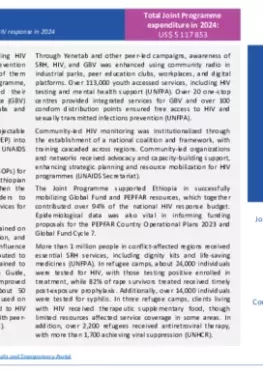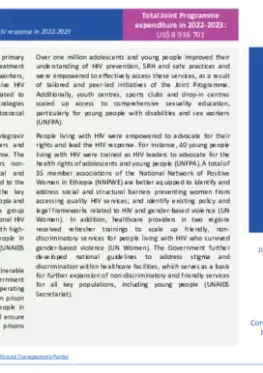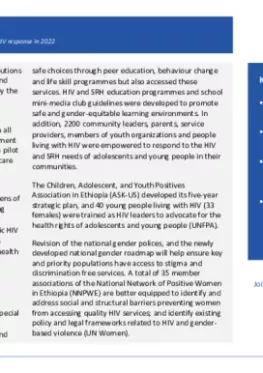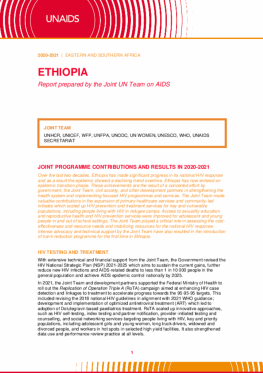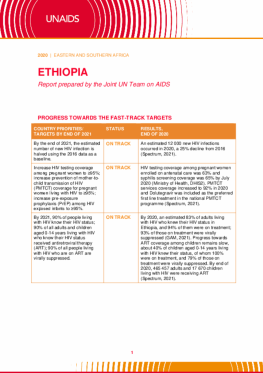|
Ethiopia
In 2024, significant progress was made in expanding HIV prevention and treatment. For example, HIV prevention education reached nearly 47,000 individuals, most of them adolescents (UNHCR). With support from the Joint Programme, over 1.6 million adolescents and youth increased their awareness of access to HIV and gender-based violence (GBV) services through campaigns in youth centres, clubs and community radio (UNFPA).
The Ministry of Health integrated long-acting injectable cabotegravir (CAB-LA) as pre-exposure prophylaxis (PrEP) into the national HIV prevention strategy (WHO, UNAIDS Secretariat).
A training manual and Standard Operating Procedures (SOPs) for delivering a comprehensive HIV service package in Ethiopian prison settings were developed, aiming to strengthen the capacity of prison authorities and health providers to standardize and ensure consistent, high-quality HIV services for individuals entering the prison system (UNODC).
A total of 130 religious and community leaders were trained on sexual and reproductive health (SRH), HIV prevention, and gender-based violence. These leaders leveraged their influence to advocate for HIV and SRH awareness and contributed to shifting social norms. Further, 100 educators were trained to implement the School Health and Nutrition Club Guide, promoting student well-being and supporting improved academic outcomes and 86 club leaders from about 50 government universities received life skills training focused on communication, advocacy, and peer counseling related to HIV and SRH. These leaders reached over 20,000 students with peer-led education and support (UNESCO, UNAIDS Secretariat).


